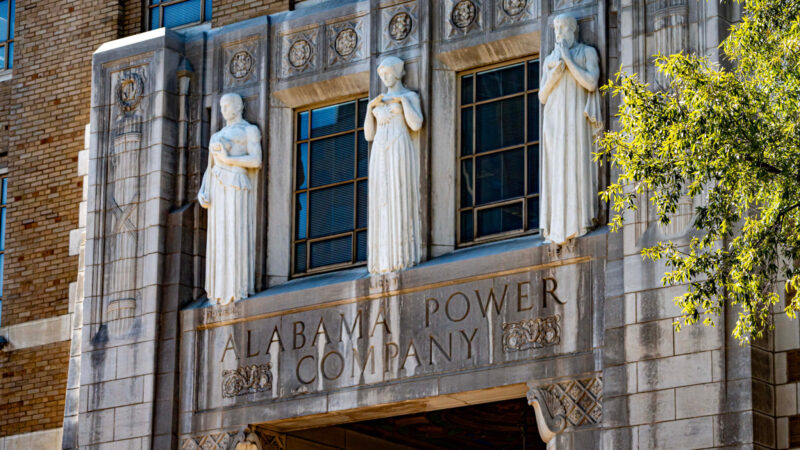A Letter From Selma, 50 Years Later
Saturday, March 7 is the 50th anniversary of Bloody Sunday. That’s when police beat marches trying to walk from Selma to Montgomery in support of voting rights. While people look back at Selma 50 years ago, the weekly newspaper WELD has published a letter written just 11 days after Bloody Sunday. It offers a unique insight into what some of the people in Selma thought about those events as they unfolded. WELD editor Nick Patterson reads from the letter, which he says “offers a pretty significant glimpse into the mind of one particular facet of the community in Selma.”
Read a selection from the letter:
Selma is steeped in the “Old South” tradition. There is old wealth, a large group of prominent families, and a great regard for heritage and manners. It is essentially an island, completely absorbed in its own interests and generally unconcerned with national or international events…The relationship between the races, until a year or so ago, has been unchanged. For a century, the Negro worked for the white man. He was cared for by the white man, medically, scholastically, economically; sometimes well and sometimes poorly. He was not expected to vote; indeed he showed no indication of desire to do so.
Then suddenly all of this changed. Negroes in other places began taking active part in civic affairs and groups came to Selma to organize voting drives. They at first were not successful due to lack of interest and fear of reprisal from white people. They [whites] were both furious and frightened. Here were these children for whom they had cared all these years who threatened to outnumber and engulf them. To the average white person living here, this is a fear extant since Reconstruction. They would not admit this publicly but they fear being overcome by this group that is equal in number. Any concession to Negro rights intensifies this fear.
The reaction of the white people in Selma, in my opinion, was to refuse to face the problem. They rejected any thought of biracial committees, long-range integration plans, etc. Instead, they formed Citizens Councils [segregation organizations] to “maintain our way of life” and talked and talked and found little to do. The more violently inclined, and we have our share of those, bought guns. The sheriff formed his posse and rushed around Alabama to various racial conflicts. The attitude was that “It can’t happen here and we won’t let it.” Let me point out that any elected official who might have suggested preparation for integration would have been promptly voted out of office, if not removed sooner.
Click here to read the entire letter from WELD.
How Alabama Power kept bills up and opposition out to become one of the most powerful utilities in the country
In one of the poorest states in America, the local utility earns massive profits producing dirty energy with almost no pushback from state regulators.
No more Elmo? APT could cut ties with PBS
The board that oversees Alabama Public Television is considering disaffiliating from PBS, ending a 55-year relationship.
Nonprofit erases millions in medical debt across Gulf South, says it’s ‘Band-Aid’ for real issue
Undue Medical Debt has paid off more than $299 million in medical debts in Alabama. Now, the nonprofit warns that the issue could soon get worse.
Roy Wood Jr. on his father, his son and his new book
Actor, comedian and writer Roy Wood Jr. is out with a new book -- "The Man of Many Fathers: Life Lessons Disguised as a Memoir." He writes about his experience growing up in Birmingham, losing his dad as a teenager and all the lessons he learned from various father figures throughout his career.
Auburn fires coach Hugh Freeze following 12th loss in his last 15 SEC games
The 56-year-old Freeze failed to fix Auburn’s offensive issues in three years on the Plains, scoring 24 or fewer points in 17 of his 22 league games. He also ended up on the wrong end of too many close matchups, including twice this season thanks partly to questionable calls.
In a ‘disheartening’ era, the nation’s former top mining regulator speaks out
Joe Pizarchik, who led the federal Office of Surface Mining Reclamation and Enforcement from 2009 to 2017, says Alabama’s move in the wake of a fatal 2024 home explosion increases risks to residents living atop “gassy” coal mines.








